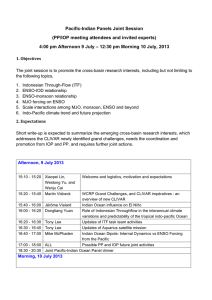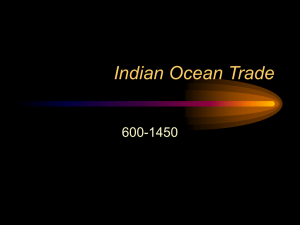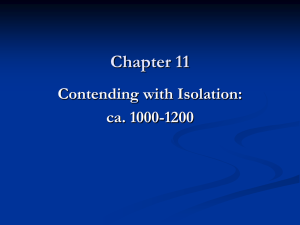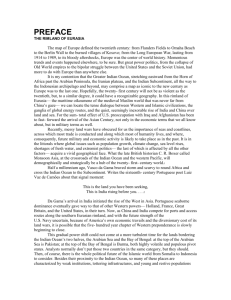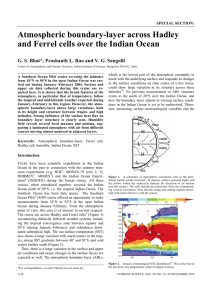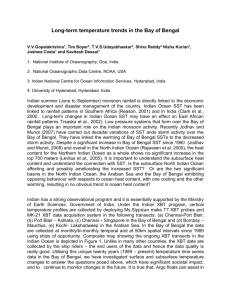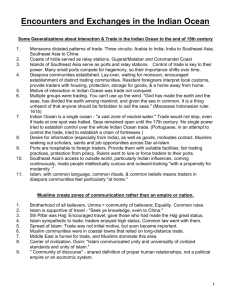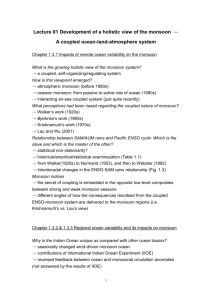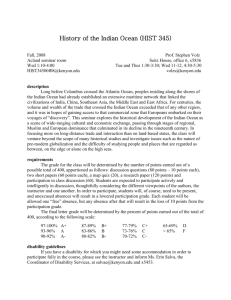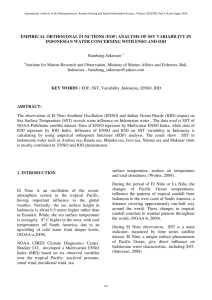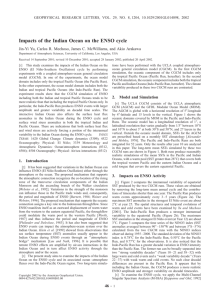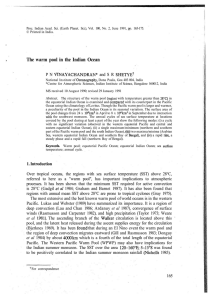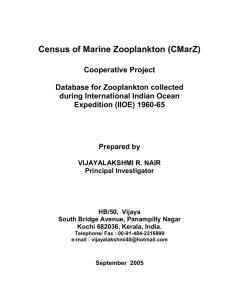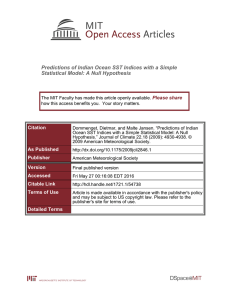9729_Cai-jy
advertisement
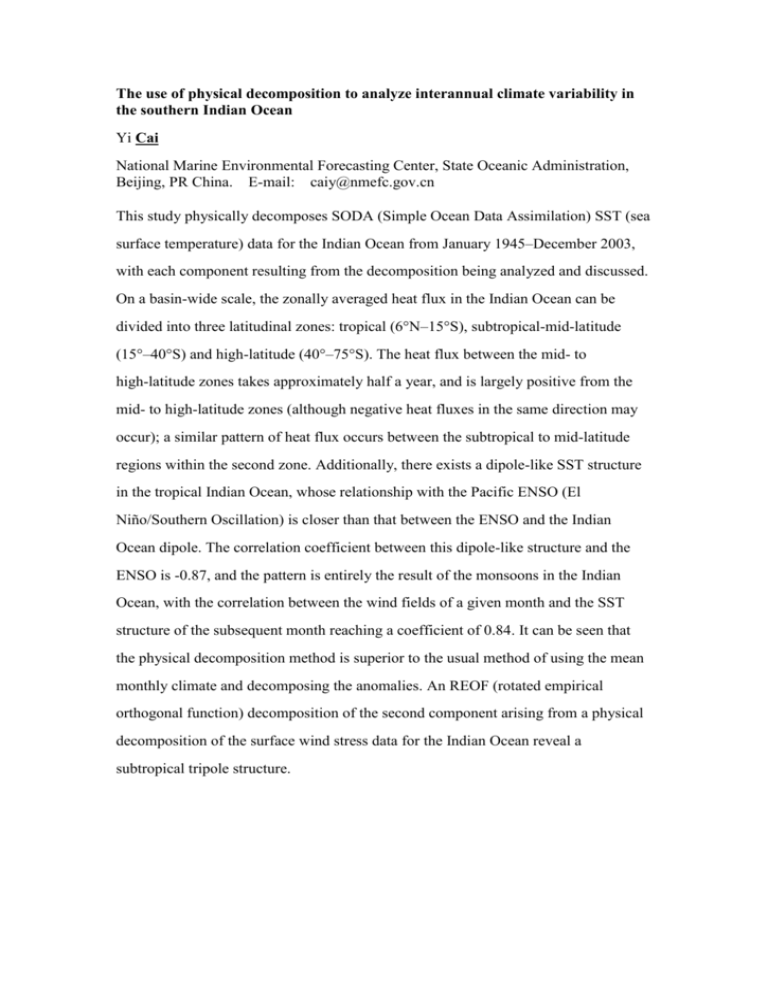
The use of physical decomposition to analyze interannual climate variability in the southern Indian Ocean Yi Cai National Marine Environmental Forecasting Center, State Oceanic Administration, Beijing, PR China. E-mail: caiy@nmefc.gov.cn This study physically decomposes SODA (Simple Ocean Data Assimilation) SST (sea surface temperature) data for the Indian Ocean from January 1945–December 2003, with each component resulting from the decomposition being analyzed and discussed. On a basin-wide scale, the zonally averaged heat flux in the Indian Ocean can be divided into three latitudinal zones: tropical (6°N–15°S), subtropical-mid-latitude (15°–40°S) and high-latitude (40°–75°S). The heat flux between the mid- to high-latitude zones takes approximately half a year, and is largely positive from the mid- to high-latitude zones (although negative heat fluxes in the same direction may occur); a similar pattern of heat flux occurs between the subtropical to mid-latitude regions within the second zone. Additionally, there exists a dipole-like SST structure in the tropical Indian Ocean, whose relationship with the Pacific ENSO (El Niño/Southern Oscillation) is closer than that between the ENSO and the Indian Ocean dipole. The correlation coefficient between this dipole-like structure and the ENSO is -0.87, and the pattern is entirely the result of the monsoons in the Indian Ocean, with the correlation between the wind fields of a given month and the SST structure of the subsequent month reaching a coefficient of 0.84. It can be seen that the physical decomposition method is superior to the usual method of using the mean monthly climate and decomposing the anomalies. An REOF (rotated empirical orthogonal function) decomposition of the second component arising from a physical decomposition of the surface wind stress data for the Indian Ocean reveal a subtropical tripole structure.



